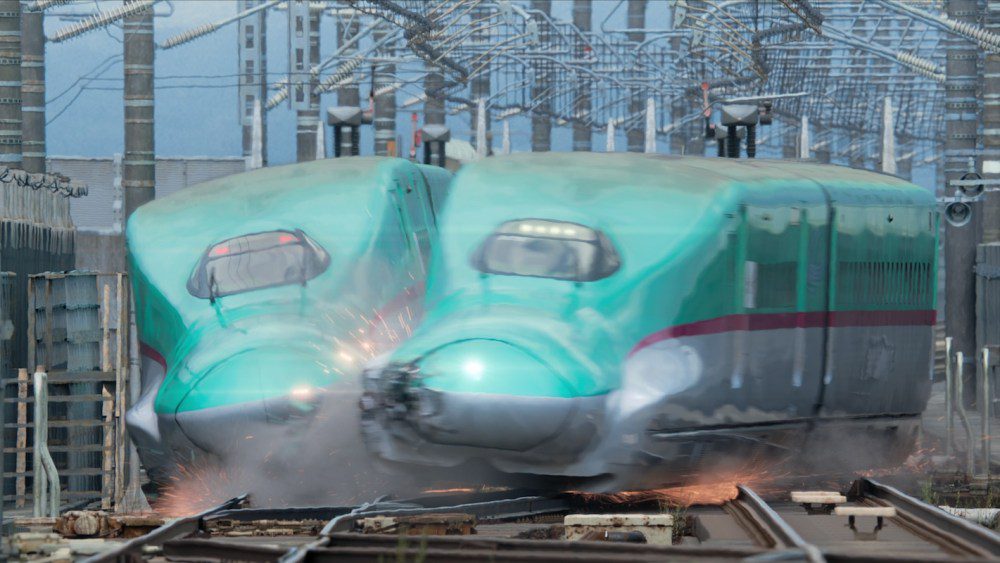Review: Exploring Themes in ‘Bullet Train Explosion’
Introduction to ‘Bullet Train Explosion’
Directed by Higuchi, ‘Bullet Train Explosion’ serves as a thought-provoking sequel to the original 1975 film ‘The Bullet Train.’ This film, like Higuchi’s earlier ‘Shin Godzilla,’ delves into bureaucratic responses to high-stakes emergencies, blurring the line between cinematic fiction and the realities of crisis management.
Plot Overview
The film commences with a gripping sequence focused on the Hayabusa No. 60 as it departs from a Tokyo station. Kazuya Island, played by the skilled conductor, reflects on a declining interest in high-speed rail, overshadowed by newer technologies and youth distractions. The plot thickens with the character Keiji Fujii, portrayed by Kanata Hosoda, who is inspired to follow in Kazuya’s footsteps despite facing various societal pressures.
A Ticking Time Bomb
As the train journeys onward, a disturbing alert reaches railway commander Kawashita Kiyoshi (Saitoh), indicating that a bomb has been planted on board. The urgent threat stipulates that the device will detonate unless the train maintains a speed of over 100 km/h. In the ensuing chaos, Kiyoshi coordinates his team, working alongside Takae and the crew in a bid to secure passenger safety while handling rescue operations amidst rising tensions.
The Broader Implications
The film highlights the stark reality that government officials and bystanders must collaborate to manage crises effectively. Unlike typical disaster films, ‘Bullet Train Explosion’ emphasizes the realistic and sometimes mundane nature of coordinated responses to emergencies, giving it a unique narrative texture.
A Character-Driven Approach
Central to the film’s narrative is the character of Kochi, played by Prince Ojijima. His professionalism and nuanced portrayal of humanity are crucial as the crisis unfolds. The screenplay, crafted by Nakagawa and Norichika Oka, gives depth to each character, weaving their individual journeys into a larger commentary on collective responsibility and human resilience.
Connections to Cinematic Legacy
Sparking comparisons to the iconic film ‘Speed,’ which similarly explores high-stakes transportation scenarios, ‘Bullet Train Explosion’ utilizes archival footage to honor its predecessors while offering a modern perspective on the theme of urgency and crisis response. It intertwines this acknowledgment within the framework of contemporary societal dynamics, making its exploration of cooperation among various entities particularly relevant today.
Technical Execution
The film’s production leverages authentic railway technology, which enhances its credibility. Critics note the smooth cinematography and pacing that keep audiences attuned to the evolving threats. This technological authenticity further deepens the sense of realism, as viewers feel the palpable tension generated by speeding trains maneuvering through increasingly dire circumstances.
Conclusion: An Adult-Oriented Blockbuster
While ‘Bullet Train Explosion’ may not replicate the frenetic energy of earlier action blockbusters, it resonates as a mature cinematic achievement. By prioritizing intelligent character development and intricate plot structures over mindless sensationalism, Higuchi’s film advocates for a belief in cooperative problem-solving as a means to navigate today’s crises, making it a thoughtful addition to the genre.


